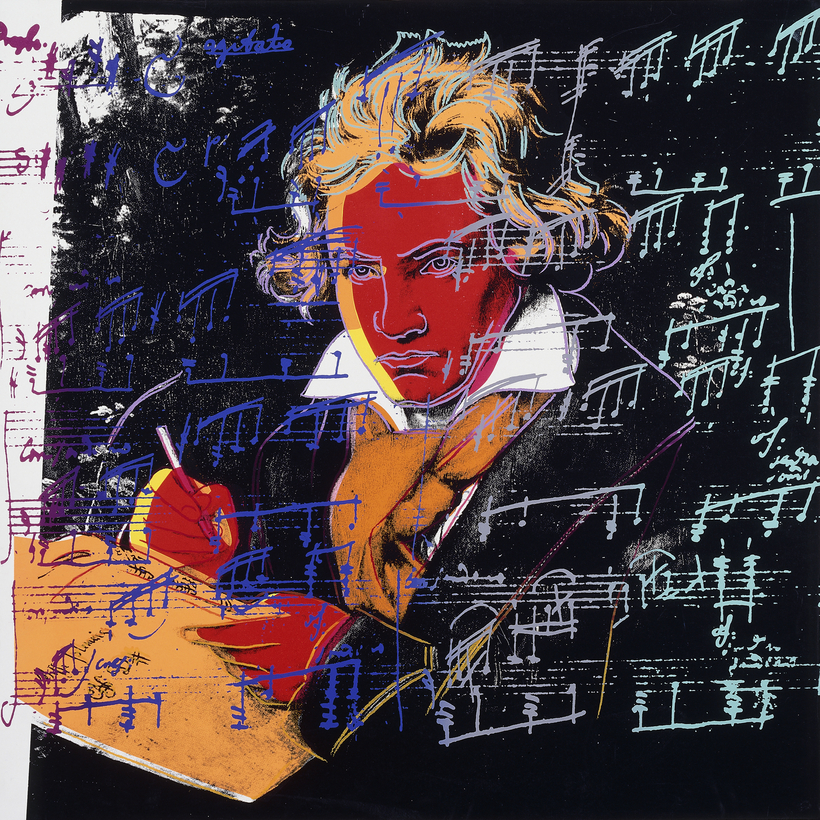In times of anxiety, we turn to the transcendental experience of great art for inspiration and solace. Yet the peculiarities of the current crisis have rendered this practically impossible. Theaters have closed, galleries have been mothballed, and hundreds of the concerts planned to celebrate the 250th anniversary of the birth of Ludwig van Beethoven have been canceled. Fortunately, we still have access to some of the most celebrated recordings as well as new books on the composer, such as this scholarly yet readable offering from Laura Tunbridge.
The literature on Beethoven is rich. Not only is he one of the greatest—many would argue the greatest—composers in the Western canon, his earned status as the “original” romantic, revolutionary artist has ensured him a small army of biographers. Wishing to stand out from the ranks, Tunbridge, a professor of music at Oxford University, offers a different approach: a portrait of the composer, his music, and his time through nine of his compositions.
Nine, of course, is a special number for Beethoven. His nine symphonies so revolutionized the form, taking it to previously unimagined levels of complexity and feeling, that many subsequent composers hesitated before attempting their own, or refused to exceed his number.
Piece by Piece
Waiting for this book to arrive, I tried to guess which pieces Tunbridge had chosen to illustrate her subject. I got three and a half.
Beethoven’s Third Symphony, the “Eroica,” provides the theme of “Heroism” (the title of Chapter 3) as well as Beethoven’s complicated relationship with Napoleon; Fidelio, the composer’s only opera and a panegyric on “Liberty” (the theme of Chapter 6), was an easy guess; while the Missa Solemnis (“Spirituality,” Chapter 8) is such an extraordinary work—the piece Beethoven considered his greatest—that I felt sure it would make the cut.
As to the half, I thought that Tunbridge would include one of Beethoven’s late piano sonatas but failed to identify the “Hammerklavier” (“Family,” Chapter 7). Similarly, I anticipated one of the late string quartets, though not necessarily Opus 130 and the Grosse Fuge (“Endings,” Chapter 9).
Other pieces included are the Septet, marking Beethoven’s initial “Success” as a composer in Vienna; the “Kreutzer” sonata, as an introduction to some of the composer’s “Friends”; the Choral Fantasy, to shine a light on “Ambition”; and the song “An die Geliebte” (To the Beloved), to illustrate the composer’s pathetic search for “Love.” Readers may be surprised that the Ninth Symphony failed to gain a chapter of its own, though Tunbridge, sneakily, manages to include a few pages on this artistic pinnacle in Chapter 8.
A portrait of the composer, his music, and his time through nine of his compositions.
Turning sonatas into sentences is notoriously difficult, but Tunbridge succeeds in evoking the music. The theme from the first movement of the “Eroica” symphony is introduced alongside the “chugging accompaniment” of the violas and second violins; the alternating couplets between the violin and the piano at the start of the “Kreutzer” sonata are like mischievous children “thumbing their nose at each other”; while the entry of a solo violin and flutes, following the jubilant Sanctus in the Missa Solemnis, has the effect of a “shaft of light, announcing the presence of Christ on the altar in the Benedictus.”
Although this is a book that will be enjoyed by anyone interested in Beethoven’s life and works, Tunbridge, as an academic, has sought to place her subject in context. Unlike the music critic E. T. A. Hoffmann—a contemporary of Beethoven’s who noted how the composer’s music unveils before us “the realm of the mighty and the immeasurable … destroying within us all feeling but the pain of infinite yearning”—she eschews rhapsodies and focuses on such topics as the development of instruments, the nature of the contemporary music scene, and the nuances of the works. In particular, and in contradiction to the romantic image of the lonely genius struggling in isolation, she demonstrates how friends, performers, and patrons played their part in the development of the man who became the most celebrated composer in Europe.
As Tunbridge reminds us, Beethoven was not always a likable figure. Notoriously irascible, he fell out with patrons and friends and, following his brother’s death, engaged in a bitter legal battle to deprive his sister-in-law of custody of her son. Mitigating such behavior are the tragedies Beethoven was forced to suffer: the fact that, despite longing for love, he never married and, most famously, that he went deaf. By the time he was in his early 40s, the composer could no longer hear if he played a wrong note on the piano and, after 1818, was forced to rely on conversation books to communicate with people. That, despite his handicap, Beethoven went on to compose the Missa Solemnis, the Ninth Symphony, his last piano sonatas, and the late string quartets—some of the most profound music ever to have been imagined—is a miracle which scholarship, even as fine as this, has yet to explain.
Tim Bouverie is the author of Appeasement: Chamberlain, Hitler, Churchill, and the Road to War


